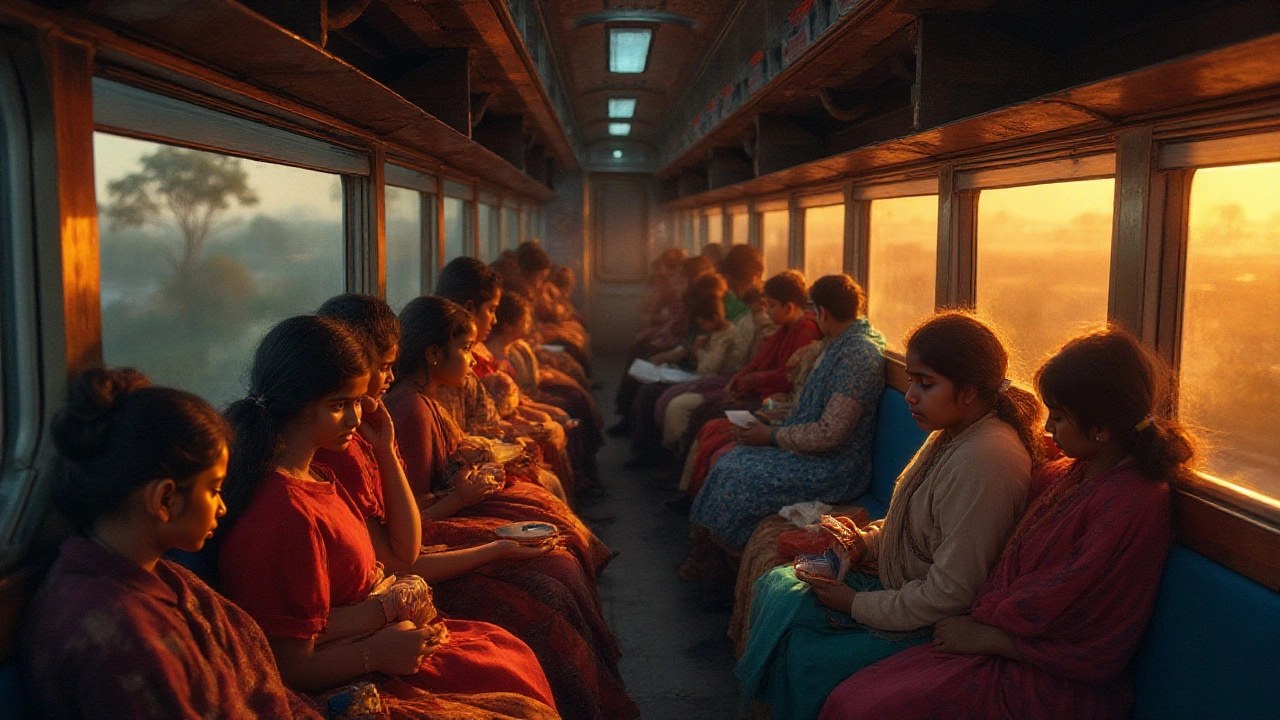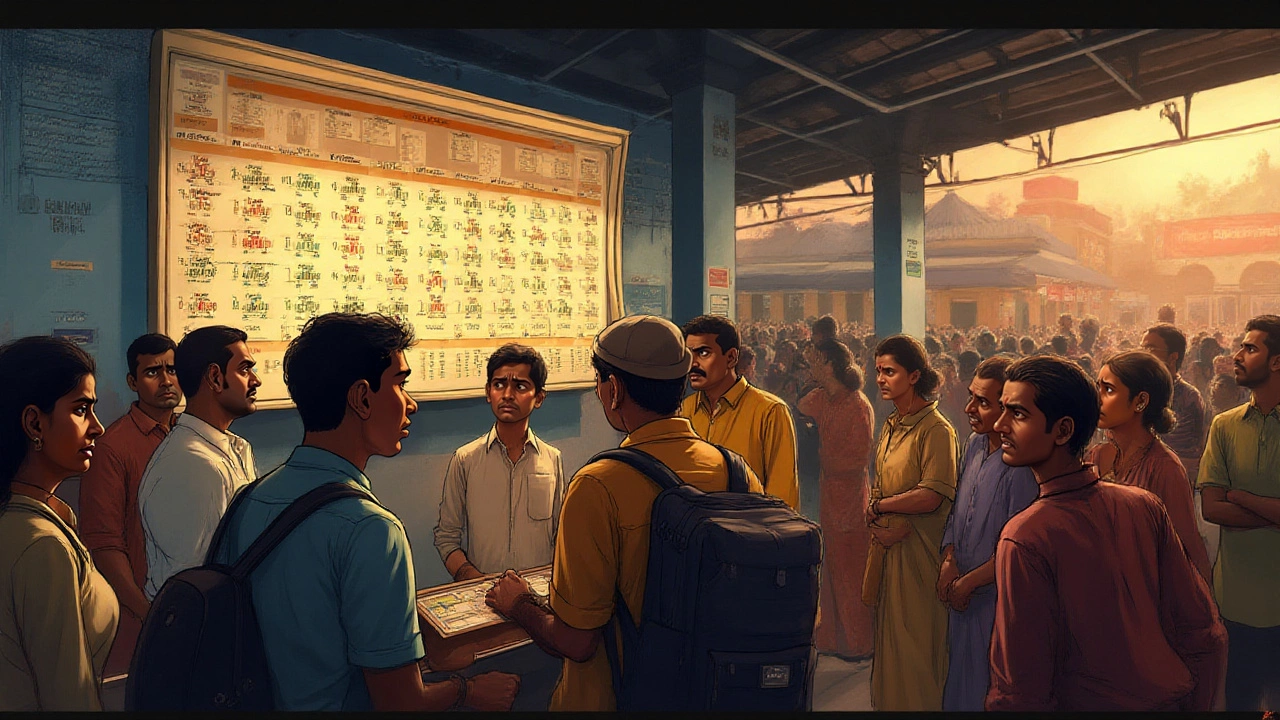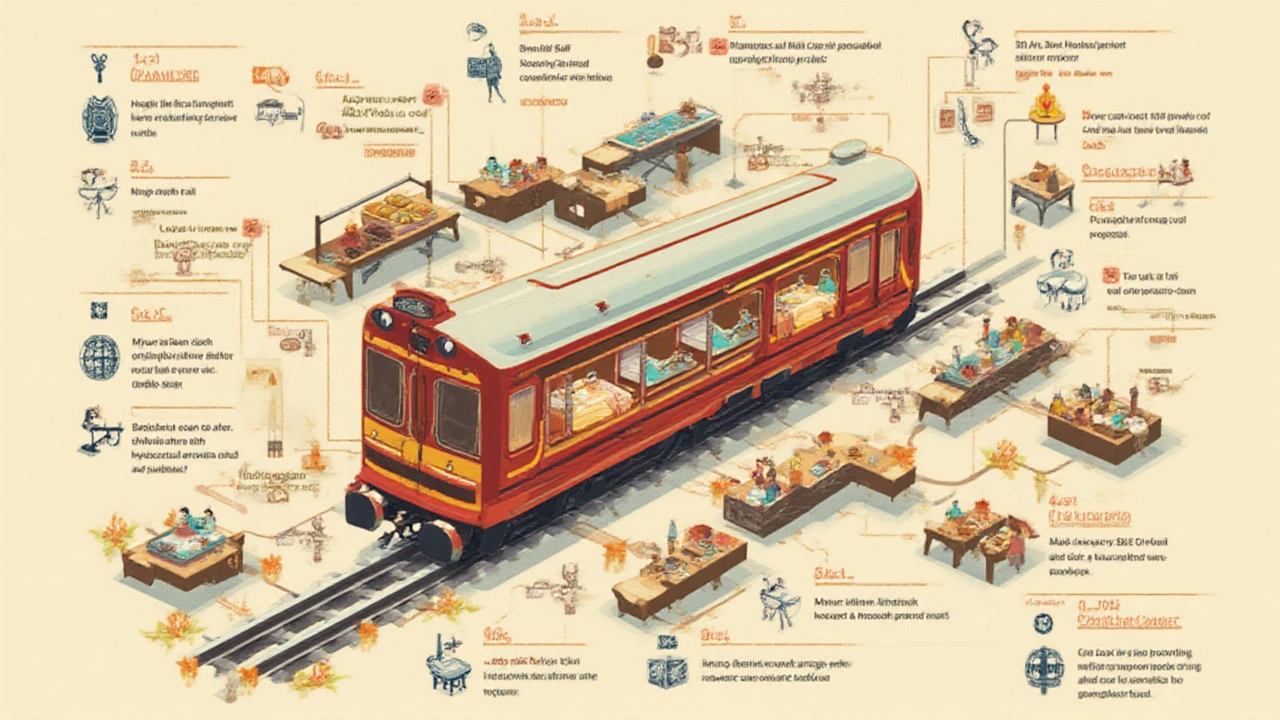Why Are Sleeper Trains So Expensive? Rail Travel Costs Explained
 Aug, 2 2025
Aug, 2 2025
Try booking a sleeper train these days, and you’ll probably feel your wallet flinch. Whether you’re eyeing the Caledonian Sleeper through Scotland, a Vienna-to-Paris Nightjet, or even one of the Indian Maharajas’ trains, the price just doesn’t sit right compared to flying or a basic day train. But the expense isn’t random: there’s a stack of reasons—many of which hide behind the velvet curtains and retro nostalgia the marketing teams love to show off. The real story is less about comfort and more about cost and logistics. So why does a simple bed on wheels feel like a splurge? Here’s what’s really eating up your ticket money.
The Hidden Costs of Running a Sleeper Train
Every time you board a sleeper, you’re not just paying for transit—you’re funding an entire rolling hotel operation. Think about it: one deluxe sleeper can easily use up the same amount of track space as a daytime train but with fewer passengers, because those comfy beds and private compartments take up way more room than rows of seats. Fewer seats to sell means higher prices per berth.
Beds aren’t the only space guzzlers. Sleeper trains need staff to keep things running all through the night: stewards, housekeeping, conductors, even dining car employees sometimes. There’s a steady flow of labor costs, and since sleepers run at odd hours, these workers are often paid extra for overnight shifts. Add in the cost of laundry, cleaning supplies, linens, toiletries, and prepped meals—stuff you never see on a budget day train—and suddenly, operating expenses shoot up.
Upkeep is another quiet drain. Sleepers cruise overnight for hours, so their cars have to meet stricter safety and comfort rules: reinforced couplers, better sound insulation, HVAC systems to keep cabins cozy or cool, and security features because passengers are sleeping (aka distracted and more vulnerable). All these upgrades need maintaining, which isn’t cheap, especially in older rolling stock being retrofitted to meet modern expectations or pesky government standards.
And let’s not skip the triple-whammy of fuel and tracks. Overnight trains run slower than snappy express lines, sometimes using awkward routes to fit around daytime service. This can mean extra track usage charges, less efficient energy use, and awkward stops or terminations that force operators to pay for idling equipment in costly urban real estate. It's like hoteling in one of the most expensive neighborhoods, but on rails.
Here’s a quick look at where the money goes:
| Expense | Day Train | Sleeper Train |
|---|---|---|
| Staff per passenger | 1:60+ | 1:20 or less |
| Maintenance per kilometer | Standard | 25-40% higher |
| Laundry & Amenities | Minimal | High |
| Occupancy (beds/seats) | 300-600 | 60-300 |
| Average Ticket Yield | Low | High |
Why Planes Are Cheaper (And Why Trains Can’t Compete)
If flying sits cheaper on most routes, it’s not because airlines are magical. Aviation fuel is taxed less in many parts of the world, and airlines typically get more state support for big-ticket infrastructure. They squeeze hundreds into tight rows, sometimes running several flights per day between the same cities—crazy economies of scale.
But with night trains, operators can usually manage just one return journey per 24 hours on a given route; the train is gone all night, so it can’t be turned around for another run until the next evening. So, the same $300 million worth of rolling stock works half as hard as a daytime fleet, but costs just as much to lease, maintain, and insure.
Booking platforms often show sleeper trains as a luxury add-on, especially in North America and Western Europe—think Rocky Mountaineer across British Columbia, or the now-shaky Silver Service in the U.S. Amtrak’s Viewliner Roomettes or Canadian Prestige class charge a premium, and even the humbler couchettes of the new European Nightjet usually run double or triple the price of a coach seat. The old joke is that overnight trains have to compete with budget airlines and hotels at the same time. No surprise the fares start high and don’t have much wiggle room for discounts.
There’s also the annoying cost of regulatory compliance. Trains running overnight often cross borders, dodging different sets of rules about security screening, food safety, and labor. While you sleep, armies of behind-the-scenes staff are switching carriages, rerouting freight, or dealing with government inspectors—every hiccup, delay, or inspection adds friction (and cost) most flyers never hear about.
Ever hear about demand pricing? In the sleeper train world, last-minute deals are rare. The limited stock of berths—especially in coveted private compartments or en suite cabins—means they fill up quickly at top rates, especially in high season. Don’t count on a bargain if you’re booking late.

Luxury, Nostalgia, and the Marketing Machine
Nostalgia sells. Operators know lots of people want that old-world glamour, so they pack sleepers with polished wood, sparkling glassware, even white-gloved service. This isn’t just accidental polish—the whole ‘train as luxury hotel’ thing started in the 19th century with services like the Orient Express. Today’s equivalents like Belmond British Pullman or South Africa’s Blue Train are modeled to dazzle, stuffed with plush bedding, private bathrooms, Michelin-guide food… and ticket prices that can easily crack $1,000 for a night.
The interesting twist? Even regular overnight trains must play this game to survive. They're branded as experiences, not just transport. Even if you skip the champagne breakfast, you’re still funding roomier beds, mood lighting, branded toiletries, and handsome corridors designed to make Instagram pop. Some travelers love this, but it costs everyone more—even the folks who only want shut-eye and a shower.
The amenities arms race gets real. Across Europe, trains now offer Wi-Fi, adjustable beds, mood lighting, smart TVs, and private en suite bathrooms. The ÖBB Nightjet’s new generation has family compartments with connecting doors. That's great for comfort, but it also means fresh investments and maintenance, which push average fares up. Netflix for a night train? You’ll pay for it, even if you spend your time reading or staring out the window.
Then there's the experience tax: many sleeper train travelers are one-off tourists or bucket listers. This lets companies keep prices high, since repeat customers aren’t the backbone here. Families and solo backpackers in search of daily bargains will struggle to find the same deals as frequent flyers or highway bus users—because sleepers just can’t fill their beds cheaply and consistently enough to offer mass-market discounts.
Are There Ways to Save? (And Who's Really Getting a Deal?)
Don’t assume all sleeper train tickets demolish your budget. If you’re flexible with your dates and okay with basic accommodations (like couchettes or shared cabins), you can shave a good chunk off the cost. Traveling off-season helps; for example, riding the Prague-to-Budapest Metropol in early winter usually costs about half the summer fare for a shared compartment. Grab seats as soon as they’re released—Eurail and Interrail passholders get first dibs on some berths if they move fast.
Group bookings can score you relative savings, since splitting a private cabin among friends or family is almost always cheaper than booking solo. Kids and seniors often qualify for discounts, and passholders (think Eurail, Interrail, or Amtrak Guest Rewards) sometimes get sleeper upgrades or reduced reservation fees. It pays to research national rail promotions; for example, Germany’s "Sparpreis Nacht" deals offer budget berths on select routes if you book months ahead.
If you’re not fixated on privacy, couchette compartments—a fun Euro-quirk—deliver the overnight experience at a much lower price. Bunk up with strangers in a six-berth compartment, trade travel stories, and wake up in a new city for the cost of dinner and drinks out. Sure, it’s less plush than a deluxe cabin, but more authentic too.
The real trick? Compare all your options side by side. Sometimes a first-class day train plus a youth hostel will beat a sleeper train for comfort and price, especially if you value flexibility. If you want to log serious miles for less, splurge on night trains for the scenic mountain or coastal routes and go budget for cross-country stretches. Apps like Trainline and RailEurope make comparing fares much easier.
For Canada, VIA Rail’s sleeper service between Toronto and Vancouver (The Canadian) is no bargain. But if you’re able to book on the "Escape Fare" offers or off-peak shoulder dates, you might snag a classic berth for less than a hotel room would cost for the same trip. Keep in mind: local discounts and specials are rarely marketed heavily, so sometimes it pays to call or visit the ticket office in person.

What Could Make Sleeper Trains Cheaper?
The future of cheap sleeper trains might depend on political will, not just operator trickery. State investment in overnight rolling stock, infrastructure, and staffing would spread the risk, much like airlines get with regional or national subsidies. Green lobbyists are pushing hard for trains as a low-carbon alternative—but until governments step up with serious funding, private operators will keep prices high to survive.
Major European cities have been waking up to this, slowly. Since 2021, the European Union has funded pilot "Green Night Train" initiatives, subsidizing operators to try lower fares and new rolling stock—so expect the cost gap to shrink if those programs stick. It helps when rail infrastructure charges are frozen or reduced for night trains; Austria slashed night access costs by about 30% in 2023 for ÖBB Nightjets, making expansion a bit more viable.
Flexibility in ticketing could help, too. More modular compartments (that switch between daytime and sleeper layouts) would allow extra passengers at peak times and lower per-berth costs. Some new trains (Siemens Viaggio, for example) are built for rapid reconfiguration, promising fewer empty bunks and better value.
If North America jumped in with fresh investment, more routes could reappear, and the scale could make tickets cheaper. Right now, political support lags behind rhetoric—even as demand spikes every time a "new" sleeper line is announced. But with climate goals tightening and Gen Z travelers longing for greener travel, the dial might shift in the next decade.
The bottom line: until some combination of government cash, clever train design, and big crowds shows up, sleeper trains will remain a splurge, not a steal. If you can score a deal—do it. If you’re saving for the once-in-a-lifetime route, pile up your vacation days and treat it like a classic old-school adventure. And yes, your Instagram will thank you.